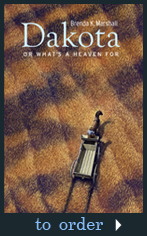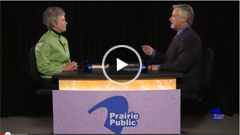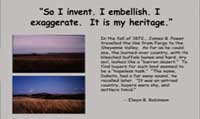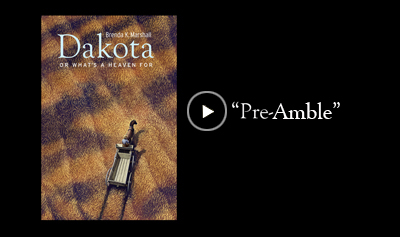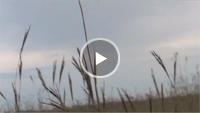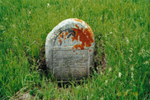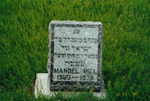Dakota, Or What’s a Heaven For: Excerpts and Videos
Prairie Public TV interview
Prairie Pulse 837, Brenda Marshall, Author: "Dakota, or What's a Heaven For" discusses her book with host John Harris.
Authors' Forum
Hatcher Library, University of Michigan, 2011.
Introductions by Karl Pohrt and Tom Fricke, reading, and interview.
Authors@Google: Brenda Marshall
"Dakota" is a sweeping work of fiction set in the late 19th century Great Plains. Author Brenda Marshall came to Google to read from her book, talk about her writing process and give us insight into what exactly the publishing process looks like.
One of the characters in Dakota, Or What’s a Heaven For, the only one, in fact, to speak in the first-person, is Kirsten Knudson. We watch Kirsten, the daughter of Norwegian homesteaders, as she grows from a voluble girl of twelve, in 1875, to a wiser, but still independent young woman of twenty by the end of the novel in 1883. Kirsten’s English is often more creative than proper, but her observations can be surprisingly acute. The story of Frances Bingham may provide the spine to the novel, but Kirsten Knudson is its heart.
In this short passage from an early chapter entitled, “In Which Little Norwegian Girls Are Like Grass,” twelve-year-old Kirsten has been sent by her mother to look for her two little sisters, Haldis and Guri. As I was writing this passage, I was thinking of the excitement and energy of the decades of the 1870s and 80s in Dakota Territory, of the politicians in Yankton in southern Dakota, of the Northern Pacific Railroad’s expansion across the northern Dakota plains, of the country’s fascination with the new bonanza farms in the Red River Valley, and, of course, of the waves of immigrants taking homesteads across the territory. In the midst of all this activity I wanted to imagine a young girl, who, by virtue of youth, sex, and class, would be almost invisible. Reading from Dakota, Or What’s a Heaven For ![]()
The Dakotas are often imagined today (and not without reason) as a place of homogeneity. And yet, a story about the “settlement” of the Dakotas is necessarily a story about the Native Americans of the northern plains and of many different immigrant groups. According to Plains Folk: North Dakota’s Ethnic History (see Selected Bibliography), as late as 1920 the U.S. Census showed that two-thirds of North Dakotans were either born in, or had at least one parent who had been born in, a foreign country.
The Sons of Jacob cemetery, set on a slight knoll in the midst of farm fields in north-central North Dakota, is a reminder of one of the small communities of Jewish homesteaders to come and go. The photographs on this page were taken in 2000. A granite monument bearing the names of the early Jewish settlers in this community has since been erected. Here is an excerpt from the chapter “In Which a Flood Both Washes Away and Reveals.” It is the spring of 1881 and the nearby Red River is flooding. The man with whom Frances speaks, Jack Shaw, is the former Yitzchok Chavinitz, an immigrant from Russia, who is the bonanza farm’s chief mechanic. The scene begins as Frances Bingham watches from the large house where she lives on her father-in-law’s bonanza farm. Reading from Dakota, Or What’s a Heaven For ![]()
Chapter XLI, “In Which a Coffin is a Bed but an Ox is Not a Coffin,” can be found in the Summer 2010 issue of the Michigan Quarterly Review. It has been reprinted in the New Stories from the Midwest 2012.


